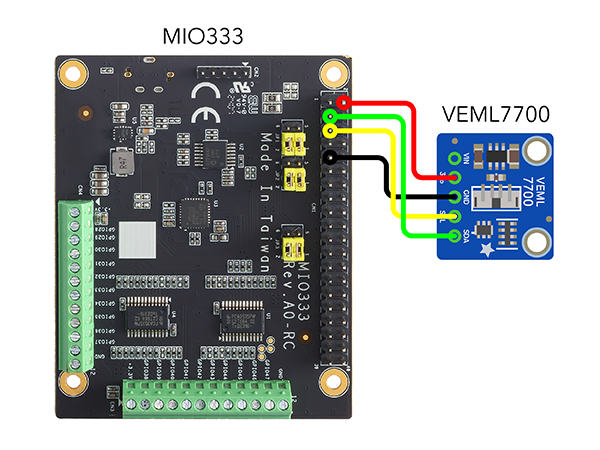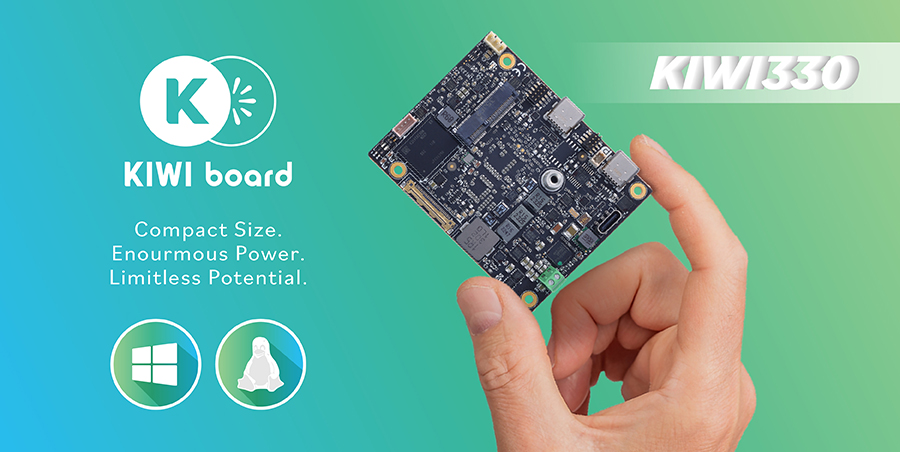
Luminosity Monitoring
The increasing demand for real-time, accurate, and connected environmental data has accelerated the adoption of IoT-based weather stations across sectors such as smart cities, industrial automation, and even in agriculture. These systems have evolved from basic data loggers into intelligent edge nodes capable of sensing, processing, and communicating complex environmental conditions autonomously.
At the center of this transformation is the KIWI330, a compact industrial-grade single board computer (SBC) designed to interface with digital sensors and perform local data processing with minimal power consumption. When combined with the VEML7700 ambient light sensor and connected via the MIO333 expansion module, the KIWI330 enables precise lux-level monitoring, edge decision-making, and seamless integration with cloud dashboards or local GUIs. This architecture provides a robust and flexible platform for deploying smart weather stations in both remote and connected environments.
The Importance of Light Sensing in Weather Stations
Among the environmental parameters most critical to modern monitoring systems, ambient light plays a central role. Sunlight intensity directly impacts energy efficiency in smart buildings, photosynthetic productivity in agriculture, and predictive modeling in weather analytics. The VEML7700, a high precision digital ambient light sensor, is specifically engineered for these applications. With a measurement range spanning from 0.003 lux to over 120,000 lux, it delivers factory calibrated lux readings via a digital I²C interface, eliminating the need for external circuitry or manual calibration. Its low power profile and compact design make it ideal for deployment in solar powered or battery operated IoT stations.
Through the MIO333 expansion module, the KIWI330 seamlessly integrates the VEML7700 alongside a wide array of environmental sensors such as temperature, humidity, barometric pressure, and air quality modules. MIO333 exposes essential I²C, UART, and GPIO interfaces, allowing the KIWI330 to serve as a central processing hub for real time sensor fusion. Environmental data can be visualized locally via a Qt based GUI or transmitted over the network using protocols like MQTT or HTTP. Additionally, remote dashboards can be deployed to enable live monitoring, historical trend analysis, and integration with cloud platforms.
Sensor Setup: Connecting the VEML7700 to MIO333
Integrating the VEML7700 with the MIO333 is straightforward, thanks to the shared support for standard I²C communication. The sensor requires only four connections: VIN connects to Pin 1 (3.3V) on the KIWI330 GPIO header, GND to Pin 6 (ground), while the I²C lines SCL and SDA connect to Pin 5 and Pin 3, respectively. Once wired, the sensor is accessible via its default I²C address 0x10. Communication between the MIO333 and the VEML7700 can be handled using the KIWI middleware utility or via Python scripts using smbus2. This setup provides a clean and reliable path for rapid prototyping and full integration of light sensing into an environmental monitoring framework.

Configuration of MIO333 Module with VEML7700 Sensor
Real-World Functionality and Automation
In a practical deployment, the weather station built on the KIWI330 uses the VEML7700 to monitor ambient light and correlates this data with other environmental parameters for analysis, alerting, and automation. For instance, a sudden drop in light intensity may indicate incoming storm conditions, persistently low lux levels can influence urban lighting strategies, or excessive sunlight can trigger automated shading in greenhouses. By performing these computations on the device, the KIWI330 reduces latency, conserves bandwidth, and ensures real-time responsiveness without relying solely on the cloud. This setup enables intelligent sensing, real-time edge processing, and seamless integration with visualization and automation platforms. For integrators, OEMs, and solution developers seeking a compact yet powerful environmental monitoring platform, KIWI boards provides end-to-end support.
About KIWI board
KIWI board is a complete solutions provider, supporting every aspect of your project, from hardware to software and system integration, to get your application functioning securely, reliably, and at peak performance. KIWI board builds its products for high reliability, high performance, security, scalability, and versatility so customers can expect extended service life, quickly adapt to evolving system requirements, and adopt future technologies as they emerge.
Next steps
Ready to talk about your projects with a KIWI board expert? Contact us
Want to hear more from KIWI board? for our newsletter Sign up
Or request a quotation






